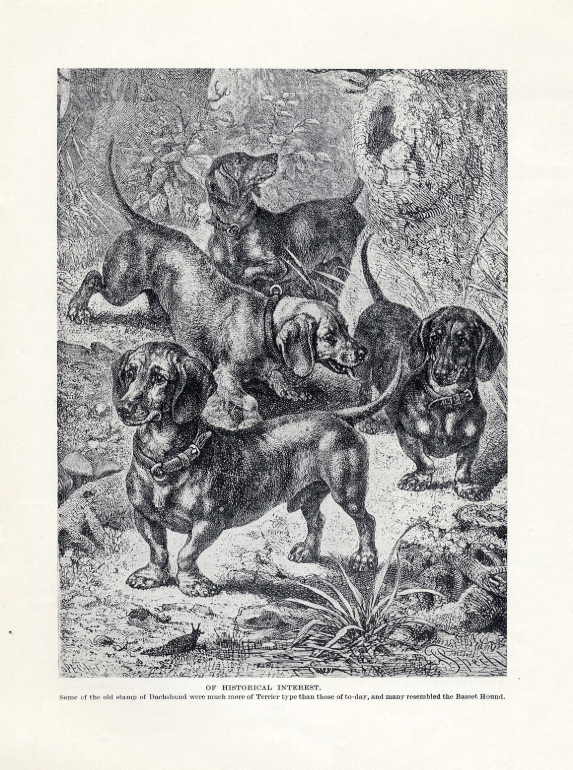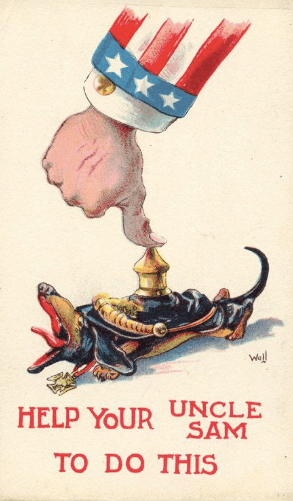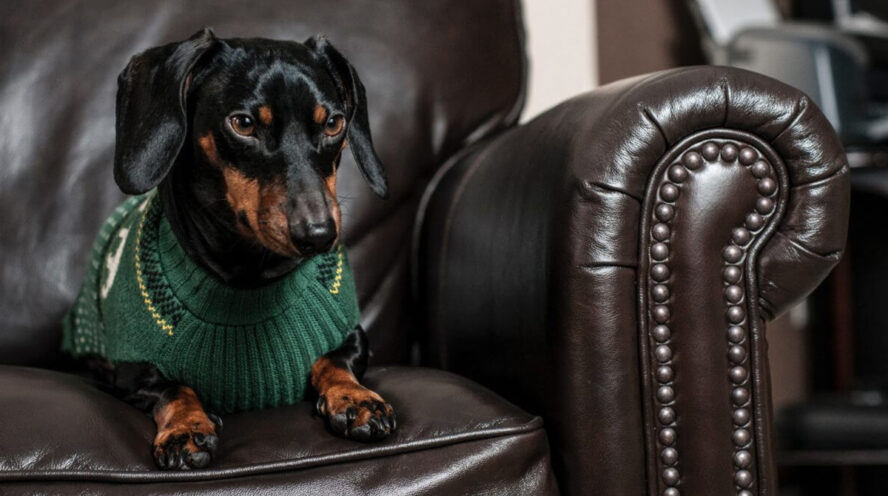According to the British Kennel Club, the number of dachshunds registered with the Club in the UK has gone up by 80 percent in the last five years. As a result many people now are showing interest in the dachshund origin and history.
These adorable little dogs are becoming more and more popular, Clint Eastwood and Adele being among many devoted owners.
Nowadays, people keep dachshunds for pleasure more than utility, -they make excellent companions. But things have not always been like this,- sausage dogs have not been bred initially to be the house pets.
You might be asking yourself,- what was the original purpose of breeding these fascinating dogs, and where from did dachshunds originate? In this article, you will find some interesting facts about the dachshund history and origin.
Dachshund country of origin
The country of the dachshund origin is Germany of the late 15th – early 16th Century. In the early days of their existence, these low long-bodied dogs had a very different appearance from a Dachshund we know today. They were looking much more like terriers or basset hounds. They were also considerably taller and bigger than a modern sausage dog.
Dachshund Names/ Nicknames
Apart from the main official name “Dachshund,” which literally means “badger dog” in German, this breed received few other names throughout the history, such as Teckel or Dackel (mostly used in Germany), and many nicknames. You may hear people calling them Sausage Dogs, Wiener dogs, Doxies, Dachies, Daxies, Daschies, Weeny Dogs or Weenies. Undoubtedly, it’s not a full list; these cuties continuously receive a lot of attention and brand new creative nicknames. I’ve heard my neighbour calling his dachshund hot dog and noodle dog J
Dachshund origin: Predecessors
There are few theories regarding the dachshund origin but it is certain that they are descendants from the taller hunting dogs such as hounds, pinschers, and terriers.
The oldest type of dachshunds, and the most popular one till the present day, smooth haired or short haired dachshund, may have been born as a cross between the German Shorthaired Pointer, a Pinscher, and a Brake Bloodhound. It may also be a cross from a miniature French pointer and a pinscher; as well as a cross from a short Bruno Jura Hound with a pinscher.
A less common theory is that Dachshund as a breed developed much later in the 18th Century from the St Hubert Hound, which is also a type of a bloodhound.
The breeders gradually managed to shorten their legs through selective breeding. It made the dachshund the perfect breed to squeeze or dig into the holes of wild animals such as badgers, foxes, rabbits, that larger breeds of dogs had difficulty to reach.
Let’s talk now about the long-haired dachshund origin. This elegant dog with silky coat first appeared in the middle of the 16th Century. The long-haired dachshund originated through the crossbreeding between the smooth-haired dachshund and the long-haired German pointer; as well as through the crossbreeding with any of the small dog breeds in the spaniel group. Another possibility is that the long-haired dachshund was born by selectively breeding the smooth-haired sausage dogs with longer hair.
And what about the wire-haired dachshund origin? This extraordinary beauty with harsh hair, beard and eyebrows appeared after the smooth and long-haired varieties in the late 19th Century. Most likely the wire-haired dachshund originated as a cross between the smooth dachshund and various wire-coated terriers and pinschers.

and many resembled Basset Hound
Dachshund origin: purpose of breeding
Let’s now get some insight on the original purpose of Dachshunds breeding.
As mentioned earlier, the dachshunds history goes back to 15th-16th Century. Back then, breeders brought to life two sizes of teckels in Germany predominantly for hunting small animals. The breeders produced the standard dachshund mainly for tracking and baying larger animals such as badgers, foxes or raccoons. On the other hand, they bred the miniature dachshund for hunting smaller animals like rabbits or tracking wounded animals.
From the first sight dachshunds look like the sweetest dogs in the world. However, don’t let their appearance to fool you, they are ferocious fighters when setting on a hunt. Five hundred years of selected breeding made dachshund the ideal hunting dog above and below ground.
Hunters mainly used dachshunds to track down and immobilise the animal. Most of the time wiener dogs follow its prey underground, and drag it from the burrow. Dachshunds have a large lung capacity for their size; so their body has enough oxygen to stay for a long time in the tight burrow.
Hunters do not use dachshunds to kill the animal. In fact it can be dangerous and even cost dachshund a life to confront badger or any other larger wild beast. It is a responsibility of the hunter to call the dog off at the right time; so that the animal couldn’t inflict any serious injuries on the dog.
If you would like to find out more about dachshund hunting, you can have a look at our separate article “Hunting with Dachshunds.”
The best way to help your dachshund live longer?
Watch our video to find out!
Other interesting history facts about dachshunds
Dachshunds “genocide”

In America, the dachshund origin played a bad joke on them. Poor dachshund went from one of the most popular dog breeds in 1913 to only 12 survivors being left in 1919.
After declaring War on Germany in 1917, everything German became an enemy in America. Dachshunds were renamed as liberty hounds, but the new name didn’t help. The owners of Dachshunds were attacked on the streets, some dogs being killed by the fierce citizens.
Acts of violence in regards to dachshunds were common in the country. For instance, in one of the kennel clubs in Chicago the owner had to shoot all his wiener dogs to avoid the acts of aggression from the neighbours. In another incident, during the celebration of renaming Schiller Park into Washington Park, people killed many dachshunds, and threw their bodies into a canal.
The governments and media widely supported these acts of violence to dachshunds at that time, not only in America but also in some European countries. In 1913, 217 Dachshunds were registered in Britain. In 1919, there were none left. This period of time was undoubtedly the saddest in dachshunds history.
Dachshunds racing competitions
Some people use dachshunds in dog racing events till the present day, even if many kennel clubs oppose dachshund races. The tradition originated in Australia in the 1970s, and now mostly held in North America. Also, if dachshunds races are often organized for fundraising purposes, they are still considered cruel and risky for the dog’s health. Dachshunds are especially susceptible to spinal injuries; any races multiply the risk of damaging the spinal cord.
Symbol of Olympic Games 1972
The dachshund was the first official Olympic mascot at 1972 Summer Olympics in Munich. The dachshund Waldi represented three qualities that athletes needed, -resistance, tenacity, and agility. The Olympic marathon route resembled the shape of the dachshund. The dog’s head pointed to the west, the route started at its neck, with the running track anticlockwise.
.

Britain’s first cloned dog
This might be the most remarkable fact in dachshunds history. First cloned dog in Britain was a Dachshund Minni Winnie, named after 12-year old dachshund Winnie he was cloned from. Minni Winnie was born from a test tube in the labs of Sooam Biotech in Seoul, South Korea, at the cost of £60,000 to produce.
The South Korean lab cloned over 500 pet dogs in the past; but they consider that Minni Winnie is the first clone produced from a British dog.
Among the oldest living dogs
Dachshunds are the record holders when it comes to the oldest verified dogs by age.
The age was authenticated via Guinness World Record. The owner had to provide the dog’s birth certificate as a proof of age.
Out of 18 oldest dogs in the world (all of whom have reached the minimum age of 20), three are dachshunds (including one of the dachshund-terrier cross).
Dachshund Chanel from the United States lived 21 years and 114 days. She is number 11 on the Guinness World Record list of the oldest dogs in the world. Chanel is followed by dachshund-terrier cross Otto from the United Kingdom (number 12 on the list) and dachshund Scolly from Mexico (number 18 on the list).



Comments
Dachshunds are the most loyal and beautiful breed of any dog on the planet, bar none!
Dachshunds are simply the best!!!!!!!!!
I am ashamed that this breed of dog was persecuted just because they originated from a certain country. SHAME ON US ALL..
Back in the late 60’s, our family had several dachshunds. My aunt found a poem that I think had been translated from German describing how God created dachshunds. The poem talked about how their markings were employed and their spunky dispositions. It described them perfectly. Somehow we have lost our copy and nothing on the internet comes even close. It was pretty long – a full typewritten page. Do you know of this? If so, could you include it on your website or email it to me?
It appears that Dachshunds were around in Roman times. An archaeological dig on a Roman site in Oxfordshire have discovered skeletal remains of the same breed. What do you all think ?